Written By: Lawrence “LT” Tolman
We’re on the last stop on our world tour of diesel engines, and that means it’s time to take care of the blue-oval crowd. While each brand has its followers, the Ford fans are by far the most loyal, and for good reason. Each year, more Ford trucks are sold than any other brand; and that title has been running for 40 consecutive years. So, let dive right in, and learn a little history lesson about corporate partnerships.
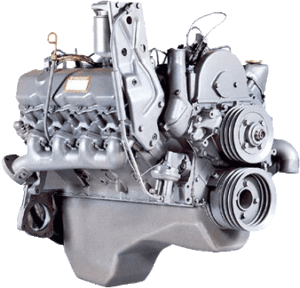
6.9 IDI, 1983-1987
Ford decided it needed to have a partner in its diesel engine game, so in 1983 they hooked up with International Harvester (later purchased by Navistar, now known as Navistar International). IH had been producing tractors and engines for farming and commercial equipment for quite a while, so it was a great strategic partnership. Ford could focus on making their trucks as good as possible, and IH cranked out some pretty stellar engines, the first of which (relevant to us) was the 6.9 IDI, or in-direct injection.
At the time, it was comparable to GM’s 6.2 in terms of power, cranking out 170 hp and 315lb-ft of torque. It could achieve some great numbers for fuel mileage, but it was never intended to be a hotrod. While there are no high-performance internal parts available, you can still buy a Banks Sidewinder turbo system to add some wind into the sails of your classic Ford. By installing a turbocharger and forcing much more air into the cylinders, you’ll gain another 82 hp and 143lb.ft. at the rear wheels, plus gain almost 30% more fuel economy, which is a major kick in the pants for any vehicle.
7.3 IDI, 1988-1994
If you follow the mantra “go big or go home” then you’ll be keen to know Ford holds the record for the largest displacement diesel engine in a pickup truck, measuring in at 444 cubic inches. Improving on the design of the earlier 6.9 IDI, the 7.3 saw several internal changes, and had its output raised to 185hp and 338 pounds of torque, but the most exciting change was the addition of a turbocharger for the 1993 model, which added a whopping 5 horsepower and 50 pounds of torque. According to official reports of the time, the turbocharger was mainly used to improve engine response at higher elevations, but unofficially, there are rumors the output of the 7.3 turbo was sandbagged to make next year’s engine (the Powerstroke) look better by comparison.
7.3 Powerstroke, 1994-2003
To clear up any confusion, the only similarity between the IDI and 7.3 Powerstroke is the displacement. The Powerstroke features direct injection using HEUI (Hydraulically-Activated Electronically-Controlled Unit Injectors), electronic computer control, and of course a turbocharger. Power ratings grew several times throughout its eight-year run starting with 210hp and 425 pounds of torque but wound up at 275hp and 525lb.ft. in 2003.
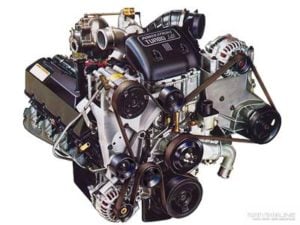
The HEUI system operates much differently than a common rail or poppet injection system; rather than using a (fuel) injection pump, the 7.3 and later 6.0 uses a high-pressure oil pump (HPOP) to raise the engine oil to a level of 500psi at idle and about 3,000 at WOT. This high-pressure oil flows into the fuel injectors, and when the electronic solenoid is activated, the oil presses against an intensifier piston which in turn forces fuel through the injector nozzle and into the combustion chamber. Since the design of the injector multiplies pressure about 7x, the fuel is nearly at common-rail pressure levels by the time it enters the cylinder, which is one of the reasons the 7.3 Powerstroke was able to have great power and efficiency. As an interesting side note, HEUI engines have two separate oil systems but share the same oil; one for high pressure injection duties, and another that lubricates the internal engine parts at a normal pressure level.
The 7.3 is Fords first engine that had any potential in a performance application. Once tuners figured out how to modify the computer to add fuel and timing, it was game on. Since early 7.3’s (before ’01) came with forged connecting rods, the stock bottom end was a great foundation to build a powerful and reliable engine. Most owners start out with the basics, like good tuning, a cold air intake, and free flowing exhaust from the turbo back, all of which which can get you another 120hp. One thing to be cautious of with the OBS Fords from 1994 to 1997 is high intake and exhaust temperature, since they are non-intercooled. Any time you compress air with a turbocharger, it becomes much warmer, which means it can contain less fuel, and therefore produce less power. After the basic mods are done, the smart move is to install an intercooler, like the Banks TechniCooler system, which can pull a tremendous amount of heat out of the compressed air, which will lead to the holy trinity of diesel performance: lower EGTs, more power, and more fuel efficiency. And once you have an intercooler on your 7.3, it will lay the ground work for more upgrades in the future, like larger injectors, bigger turbos, and more RPM.
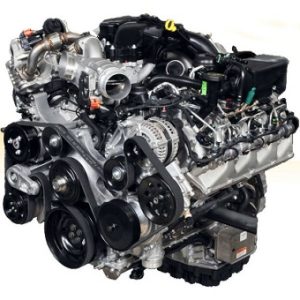
6.0 Powerstroke, 2003-2007
If there is a black sheep of the Ford family, the 6.0 without a doubt has earned the title. First introduced in 2003 as a result of tightening emissions regulations, the 6.0 initially was a crowd favorite with 325hp and 560 pounds of torque, but it still used HEUI injection even though GM and Dodge were running common rail by this point, but it did at least use a more efficient four-valve per cylinder design. To make up for the smaller displacement, a variable geometry turbocharger helped increase turbo response at lower RPM, and the one (subjective) record the 6.0 still holds is for the best sounding diesel exhaust note of all time, and it even made the Ward’s top 10 engine list of 2003. But shortly after, things began to unravel.
The heads on the 6.0 are secured to the block with a 12mm torque-to-yield fastener which is unable to provide sufficient clamping force to hold the heads onto the block, especially if you throw a basic programmer into the mix, so one of the first issues noticed on the six liter was a high incidence of head gasket failures. If you own or work on a Ford, you’ll know any major work on a 6.0 usually involves pulling the cab from the frame, so it’s always wise to make the investment in quality parts the first time around, to avoid doing the job more than once. When it comes to the fastener holding down your heads, ARP is the only name you need to know. By installing a set of their custom-age 625 studs with a new gasket, you won’t have to worry about your heads lifting or a failed gasket again.
The next big-ticket items known to fail on the six-liter are the fuel injectors. There are several ways they can fail, whether it’s from high mileage, insufficient oil flow, or neglect. The best way to keep a set of HEUI injectors happy is regularly changing your oil (5,000-mile intervals at the max) and use an oil additive to clean and maintain the high-pressure oil system, most importantly the inside of the injectors. Hotshot’s Secret Stiction Eliminator was designed with HEUI engines in mind, and it will clean out and prevent sludge from forming inside the injectors which solves a host of problems. Proper maintenance and care can help an injector last a long time, but at some point, they will just wear out. There are plenty of great factory replacements available, but if you have a high-performance bone in your body, you might find a failing injector is a great excuse to add some power with larger-than-stock injectors. Casserly makes several different sizes depending on your power goals, but a 175 or 190cc set would give a healthy bump in power, and still be usable for mild to moderate towing, but remember the larger you go, the more supporting mods you will have to do (like larger turbocharger, studs, and tuning) to support the extra fuel.
When fuel leaves the lift pump in a 6.0, it travels through a regulator, and then into a gallery in the cylinder heads, where it eventually meets up with the injectors. Unlike most diesel fuel systems however, this is a one-way path; there is no return line for excess fuel. Because of this deadhead, the 6.0 tends to trap air in the fuel, has uneven pressure across all eight cylinders, and the fuel just heats up. When Navistar manufactured the heads, they cut the fuel gallery all the way through the heads from one end to the other. The fuel enters the front of the head through steel lines coming from the fuel bowl, and the port on the back of the head has been plugged with an o-ring fitting, but this plug is what allows us to correct the issue.
Driven Diesel offers a regulated return conversion kit for both the 6.0 and 7.3, which is an important first upgrade on any HEUI Ford. It does away with the factory regulator, has high-flow banjo fittings to get more fuel into the front of the heads, allows excess fuel to flow out of the rear of the cylinder head where volume is controlled via a new regulator, and then excess diesel is simply returned to the tank. There are several important benefits to this upgrade, like cooler fuel temperatures, even pressure across all eight injectors, longer injector life, and it ensures you’ll have no fuel pressure loss under wide open throttle conditions. This upgrade is so important, most aftermarket injectors for a 6.0 or 7.3 carry no warranty unless a regulated return system is installed. That’s how important clean, cool, air-free fuel is to the life of your engine, whether its bone stock or highly modified.
To keep the engine oil temperatures under control in a 6.0, a liquid to liquid heat exchanger mounted in the valley uses coolant to pull heat out of the engine oil, but the passages in the oil cooler are very small. Corrosion naturally builds up in cooling system, and once it clogs the oil cooler, the oil will get warmer and warmer which leads to sludge formation, but more importantly a clogged oil cooler will starve the EGR cooler of coolant, causing a failure. Usually the first symptom noticed is the white smoke from the exhaust pointing to a failed EGR cooler, but further diagnosis will likely show an oil cooler was the first domino to fall.
If you are in this situation, you have a few things to remedy. First, the updated Ford oil coolers are found to be the best lasting option on the market, so replacing the clogged stock part will solve the root cause of the problem. The downstream EGR cooler will have failed since it had hot exhaust gas flowing through with no way to pull out the heat, leading to internal cracks, and coolant getting into the exhaust stream. It can be replaced with an upgraded Bulletproof Diesel cooler, which has more durable stainless-steel tubing inside, and a modified design which removes more heat from the exhaust gasses before they re-enter the engine. And finally, we need to take care of the corrosion and trash in the coolant which got you into this mess in the first place, so a Sinister coolant filter kit will clean things up and keep and on the road for many miles to come.
While injectors and head gaskets have to the big-ticket items on a 6.0, there are plenty smaller items to look out for as well. The FICM (fuel injection control module) mounted on the driver’s side valve cover can fail and leave you stranded, the fitting connecting the high pressure oil pump to the block is known to fail, the HPOP itself can go out, and even smaller items like the water pump can ruin your day.
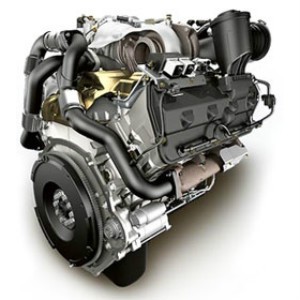
6.4 Powerstroke, 2008-2010
The good news is after the debacle with the 6.0, Ford and Navistar figured out a thing or two, and in 2008 they released the ultimate high-performance Diesel which made 350hp and 650 pounds of torque. First, they upgraded to a 16mm head bolt to keep the heads and gaskets where they belong, and five years after Cummins, Ford got common-rail injection. The Siemens VDO K16 injection pump powering the 6.4 flows about 20% more fuel than the CP3, meaning with some tuning and hard part changes, 650 horsepower from a stock K16 pump is not out of the question. In addition to tons of fuel capacity, the 6.4 also got a unique turbocharger arrangement, as it was (and still is) the only diesel in a pickup to come with compound turbos, giving great response, low RPM torque, and higher RPM power.
The root cause of many issues on the 6.4 has a lot to do with the emissions systems attached, and poor fuel mileage is the hallmark of a 6.4. Blamed on the DPF regeneration strategy, in stock trim, 14-16mpg is about as good as it gets, and even when tuned, 6.4’s rarely see over 17-18mpg which isn’t very impressive. On the topic of fuel, the stock low pressure system is lacking, and poor water/fuel separation is the cause of many failed K16 pumps, so the addition of a FASS lift pump with better filtration goes a long way to keeping the fuel supply clean, and your K16 healthy.
The radiator on the 6.4 a very common failure. It’s made from an aluminum core and has plastic end tanks crimped on with a rubber O-ring making a seal between the two, and this connection is almost guaranteed to leak at some point. OE style replacements are made from the same design, and don’t fix the root cause, but an all-aluminum welded radiator from CSF will keep the coolant where it belongs, the heat out of the engine, the truck on the road, and it’s a 100% bolt in design.
6.7 Powerstroke, 2011-present
After a rough patch with its longtime partner, Ford put Navistar in the friend zone. There are several reasons, but its rumored to be because of the increased warranty claims associated with the 6.0 and 6.4, which according to an anonymous source, cost Ford “billions and billions”. So, in 2011, Ford unveiled its all new, in-house designed and manufactured diesel powerplant, the 6.7 Powerstroke, aka Scorpion. It earned its nickname from its unique layout, with the exhaust manifolds mounted in the center of the engine. This design has a much shorter path for the exhaust gasses to get to the turbo, leading to quicker spool up. The 6.7 came out of the gate at 400hp and 800lb.ft. of torque, and by 2018 those numbers have been pushed to 450 and 935 respectively. Overall, the Scorpion is much more reliable than its predecessors, and more efficient as well.
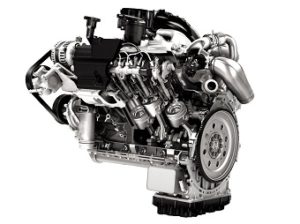
This time, Ford turned to Bosch for its high-pressure fueling duties, and selected the CP4 injection pump. Unfortunately, the CP4 can be problematic, and cause a lot of collateral damage when it fails, and although there are no CP3 conversions available like there are for the LML, there is a failsafe for the 6.7. While it won’t prevent the pump from failing in the first place, a CP4 Injection Pump Bypass Kit (Disaster Prevention Kit) will stop metal shavings from destroying the injectors, rails, and lines whenever the CP4 decides to check out. With any diesel, a fuel additive which increases lubricity like Hotshot’s Secret EDT can help to extend the lift of the CP4, which is a nice insurance policy to have.
The Scorpion used a unique turbocharger with a double-sided compressor wheel, but it was known to fail in the early 6.7’s. Ford recognized this issue, and in 2015 redesigned their turbos to a much more reliable design, but what are the 2011 to 2014 owners to do? Its actually possible to install a ‘15+ stock turbo, or a late model upgrade like the Fleece Cheetah simply by using a No-Limit Fabrication retrofit kit. This will get you a much more reliable turbo design with the added airflow and power of a larger than stock turbo that fits just like a factory replacement.
So now what…
It’s true, blue oval guys get the most grief for some of Ford’s less-than-reputable engines, but there are many redeeming qualities about the Superduty trucks. For one, they have some of the best interior packages available with their King Ranch, Harley Davidson, and Platinum editions, and Ford has some of the strongest (stock) automatic transmissions, like the 5R110 behind the 6.4 and the 6R140 from the 6.7 sitting at the top of the heap. For me, there are two choices if you’re looking to purchase a used Ford diesel truck: either stick with the old school 7.3 or step up to a 6.7. While the 6.0 and 6.4 have their strong points, odds are you’ll spend quite a few bucks on maintenance and repair, when instead you could save up just a bit more get an early 6.7 for close to the same cost.

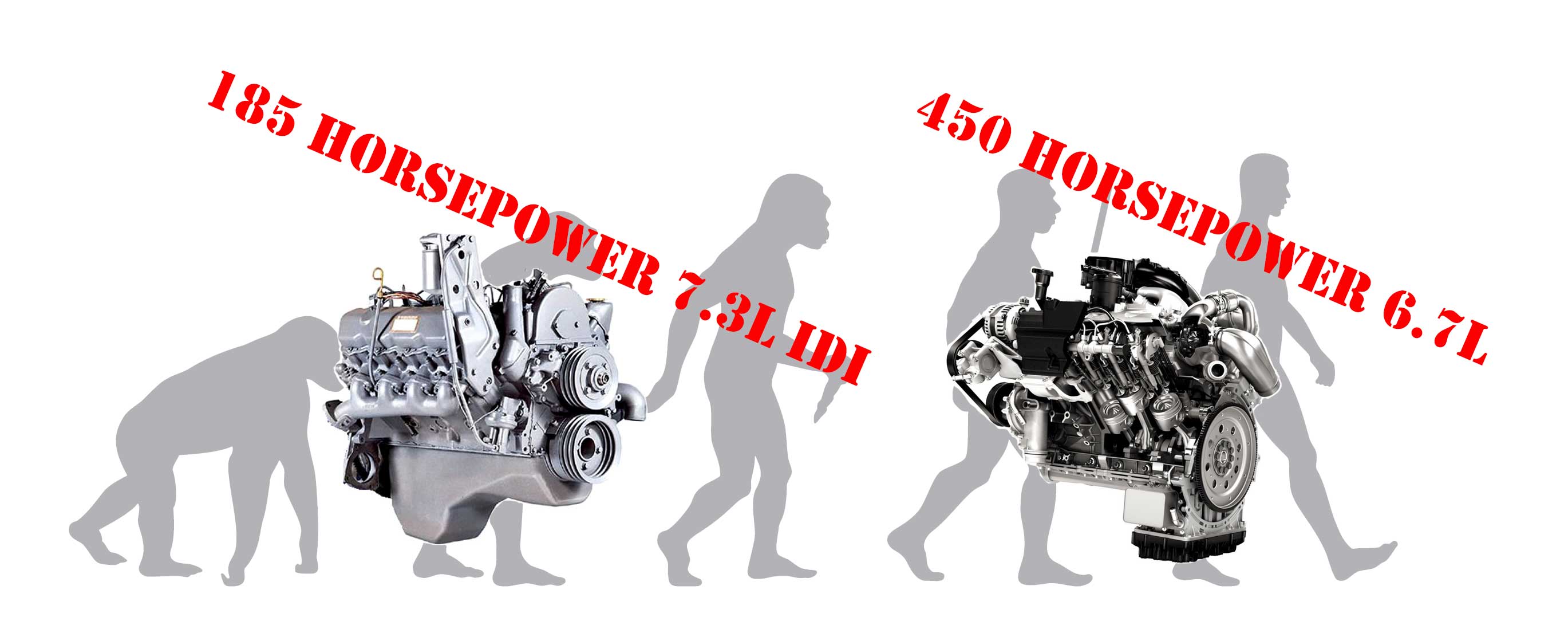
I am putting a 24 valve with the Allison 4500 trans. Where can I find help with the wiring.
We would recommend getting in contact with the company Destroked (www.destroked.com) as well as CA Conversions (www.caconversions.com) for your conversion. Good luck, will be awesome when its done.
I had a 6.0 with 375,000 miles that ran great. Had 1 new set of injectors and 1 new injector because I was an idiot. Change your oil 6.0’s aren’t terrible